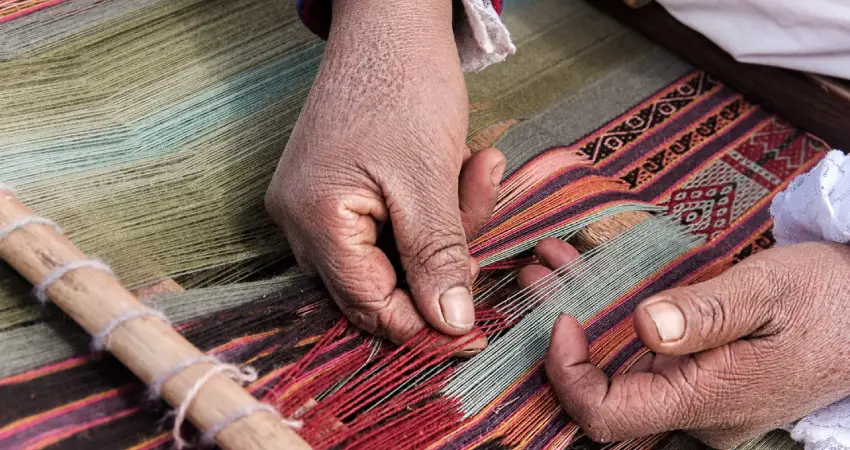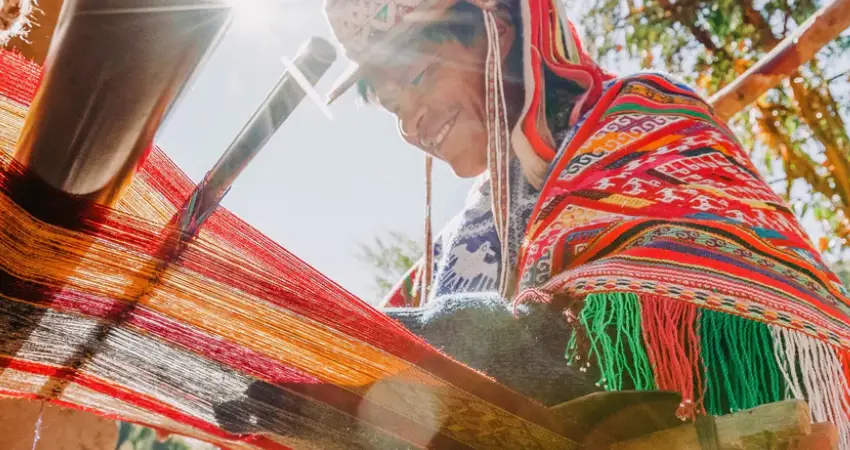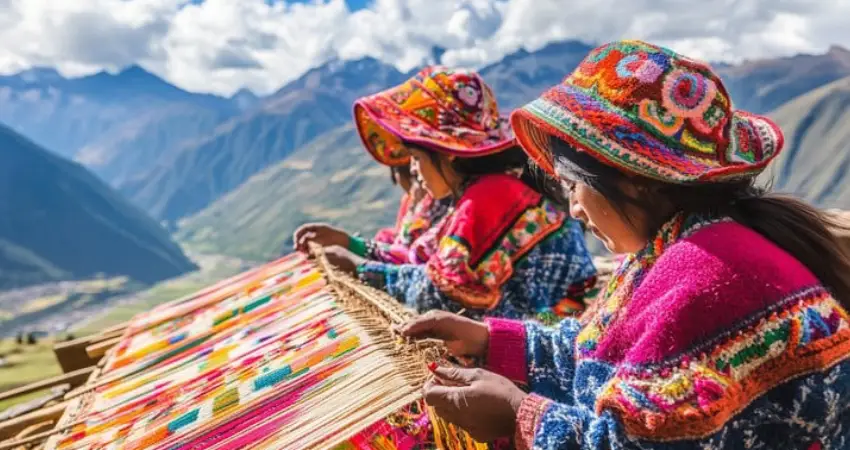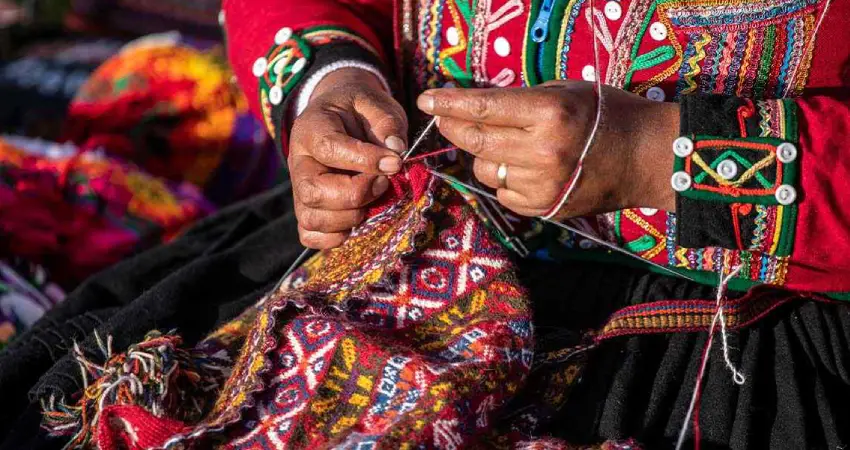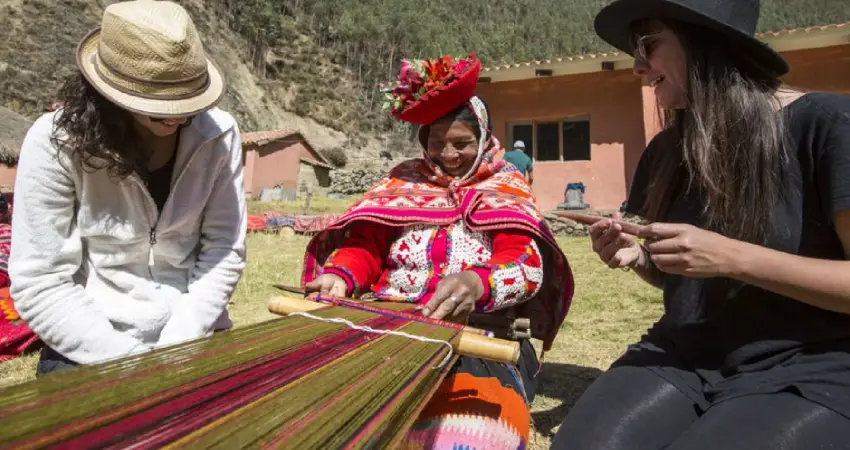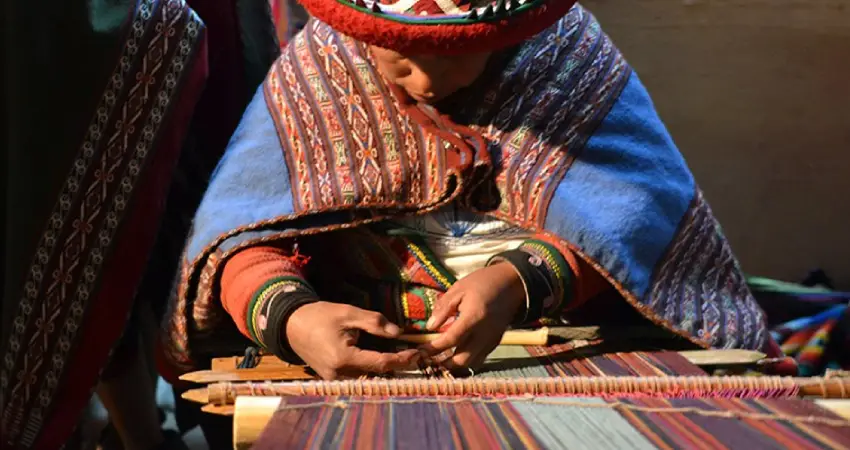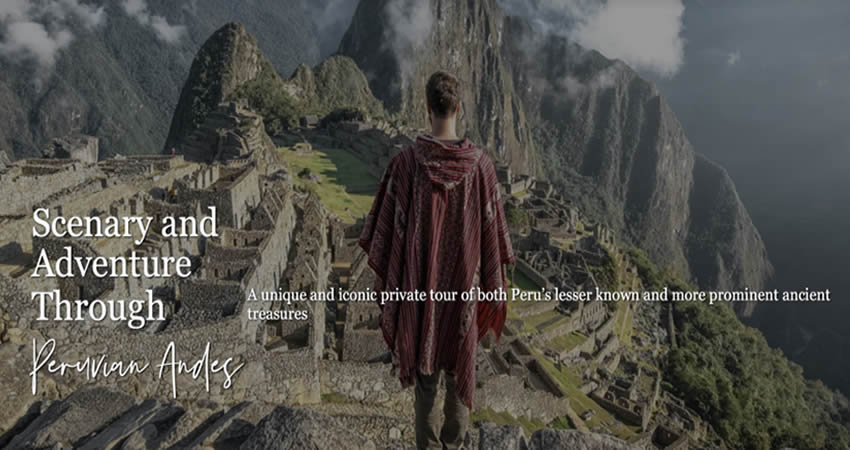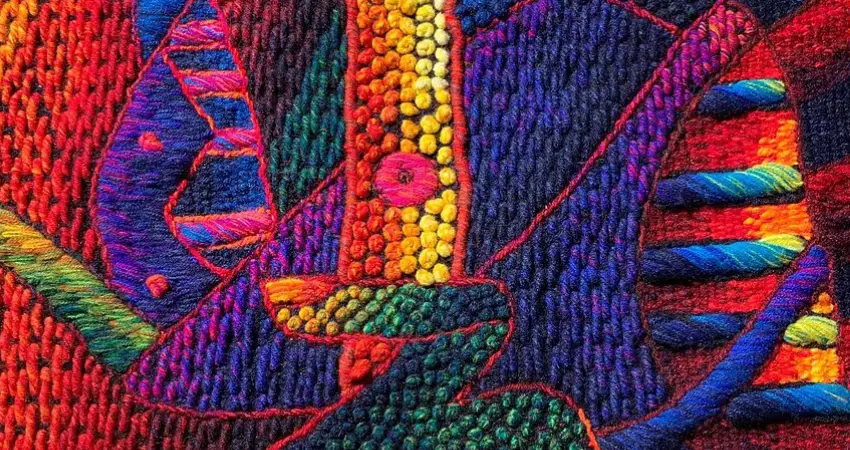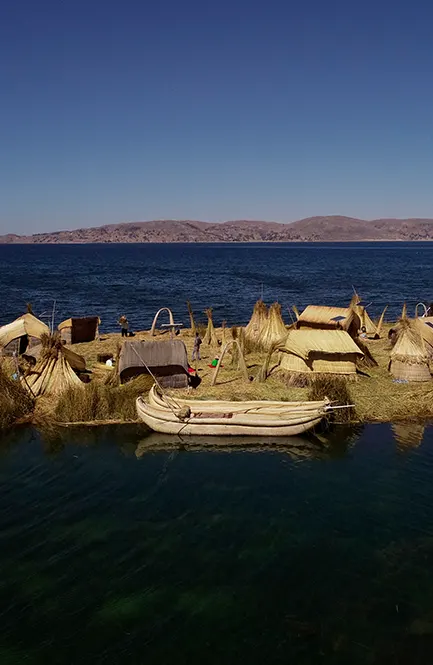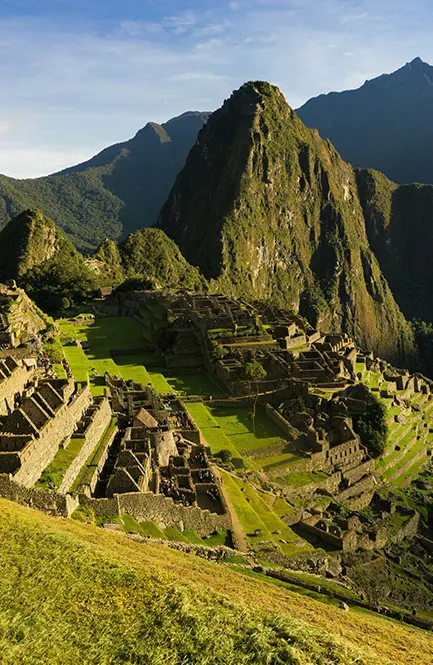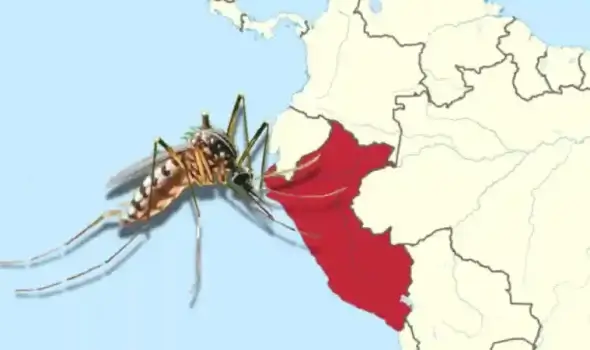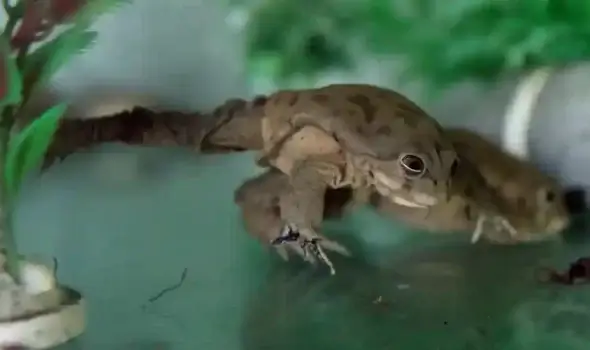1.- INTRODUCTION TO ANDEAN WEAVING TRADITIONS
The Traditional Weaving in Peru is considered as one of the most representative cultural legacies of all the Andes but not only for the beauty and complexity that it possesses in fact they contain a quite large symbolism that tells stories, traditions and even interprets cosmovisions and forms of ancient beliefs. The Traditional Weaving in Peru contain thousands of years of history so that for the people of the Andes are more than just clothing or complements of the same clothing, we even assure in saying that they are living manifestations of the great cultural heritage that is still part of the identity of Andean villages to this day.
2.- Cultural Heritage of Traditional Weaving in Peru
Many people do not understand that Traditional Weaving in Peru is more than just an object in fact it can even be considered as a means of transportation that allows you to appreciate the cultural and spiritual heritage that still exists in this part of the world which in parallel provide an image about the beliefs, religious practices and connections with nature through the social structure that has developed independently in the Andean communities. The representation of geometric figures, animals or mythological forms within the Traditional Weaving in Peru is not only for an aesthetic part in fact it has the purpose of communicating a connection that exists between the human being, the mother earth and the world of the deities.
There is also a great sense within the colors that can be found in a Traditional Weaving in Peru, as they are connected to the classification system that exists between the natural and spiritual world where natural dyes are used that are obtained through plants, insects and minerals which through a natural process can dye the wool which is the main element with which the Traditional Weaving in Peru is made. A clear example of this is the strong red color that is present in most of the samples of the Traditional Weaving in Peru, besides they associate this color with life and fertility that is only possible thanks to the Chochinilla insect, on the other hand the black color refers to the presence of the underworld, the spiritual or ancestral world as many also know it.
3.- Historical Significance of Traditional Weaving in Peru
Part of the history of preservation and innovation within the Andean culture is the development and evolution of the techniques used at the time of elaborating a Traditional Weaving in Peru, even since pre-Columbian times many of the villages that were in the Andes had already used and perfected the activity of weaving using as a base the wool and fiber of the alpaca, vicuña and sheep, in this way they came to produce some samples of resistant fabrics that had the function of maintaining the temperature and also to be decorative in the aesthetic part. Some of the cultures that existed before the Incas, such as the Moche and Nazcas, also mastered the backstrap loom and other techniques that allowed them to develop a great advance among the same textiles and obtained a great complexity to the sight of visitors.
The beginning of the Inca culture marked a very important point in the process of this activity since it can be assured that there was a progress of sophistication more notorious since the same culture implemented the state system that allowed standardizing all textile production that existed until that time also promoted specialization for weavers and thus create spaces such as workshops where there was supervision of authorities to improve the quantity and quality of Traditional Weaving in Peru. This was the golden age of Traditional Weaving in Peru since it reached a perfection in the techniques, in the aesthetic part and in this way it was joined to the religious and ceremonial aspects.
| “Immerse yourself in communities where weaving isn’t just an art – it’s a way of life.» |
Another moment of change occurred with the arrival of the Spanish conquerors in the XVI century, in this way the Traditional Weaving in Peru maintained its development and evolution but now with influences of the European culture maintaining the traditional techniques but with other elements such as fibers and synthetic dyes in this way during the following centuries the Traditional Weaving in Peru was adapted and merged in an almost perfect way allowing it to be different only due to the artistic expression of each master craftsman however maintaining the balance of the representation between the past and the present.
4.- Personalized Learning Experiences
Learning some of the most common ancestral Andean weaving techniques can only be enjoyed and experienced in a personalized way since not everyone in the world shows an interest in learning about Traditional Weaving in Peru, they just want to get it directly. This is the reason why the master weavers who still keep alive the traditional heritage of ancestral elaboration of Traditional Weaving in Peru work it in a direct way with the few apprentices that join the classes, this allows the students or interested people not only to learn the basic technical skills in fact they are also immersed in the cultural and spiritual meanings that exist in each pattern or color within the Traditional Weaving in Peru.
This process of transmission of knowledge in an oral way where the masters share their anecdotes, legends, myths and traditions is linked to the patterns that are gradually embodied in each of the pieces that are created. Each thread has a purpose and each design can tell a story that to this day exists between people and the spiritual world, some of the places where you can learn more about this process and participate in personalized classes mainly occur in the Andes, in cities like Cusco, Sacred Valley or high Andean communities.
5.- NOTABLE WORKSHOP LOCATIONS IN PERU
The Traditional Weaving in Peru is an ancestral tradition that has been preserved for many generations being a key part of the cultural identity that maintains the Andean communities, of course this activity is performed in many places in Peru and the best part is that today it is possible to be part of them not only to learn how to perform the ancient techniques but also to understand and live a cultural investment to the depths of this great experience.
5.1.- Sacred Valley of the Incas
The Sacred Valley is considered one of the main places where Traditional Weaving in Peru is an emblematic activity and even more so for those who are passionate about textile art. It is not only popular for the landscapes and archaeological centers that have become a great tourist attraction for many world travelers, in fact it is an epicenter of textile tradition especially in the villages of Chinchero and Ollantaytambo where the ancestral techniques have remained almost intact despite the passing years and it is possible to enjoy personalized experiences with local masters who preserve the techniques.
5.2.- Chinchero
It is popularly known as the town of weavers because it is one of the places where the textile tradition is still alive in the people who inhabit it, composed of several communities of Quechua origin, in this town are kept alive traditions and techniques in the use of backstrap looms in addition to others that come even from pre-Inca times. All travelers who have the opportunity to get to this place and participate in the workshops can experience being part of the creation of a Traditional Weaving in Peru, using local elements such as alpaca, llama or sheep fibers, as well as interacting with the different natural colors extracted from plants, minerals or animals.
5.3.- Ollantaytambo
Considered one of the main points of the sacred valley, the artisan town of Ollantaytambo stands out for the great variety of textile workshops that are available to world travelers at any time of the year. In these prepared and specialized spaces, travelers can have a moment of interaction with the history of the ancient inhabitants of the place, as well as participate directly with the elaboration of textiles and other related elements in which weaving techniques have been perfected for generations. The weavers that can be found in Ollantaytambo directly work in collaboration with nearby communities such as Pumamarca or Willoc where the ancestral inheritance of these techniques is allowed to the new generations.
5.4.- Cusco Region
The city of Cusco is also recognized for being one of the places with more historical and cultural record not only in Peru but around the world, thanks to this has been recognized that the culture that exists to this day is an ancestral one that somehow has survived the passage of time and the influence of many other cultures, this has been possible due to the cultural heritage that has been passed down for generations and has allowed it to remain latent until today also resulting in many options to learn more about the Traditional Weaving in Peru.
5.4.1.- Center of Traditional Textiles of Cusco (CTTC)
Within the city of Cusco is the Center of Traditional Textiles of Cusco (CTTC) playing a very important role in the preservation and at the same time dissemination of ancestral textile techniques that have existed throughout Peru. Created with the purpose of giving a new vision of Andean textile traditions and offering visitors a choice of local products made by artisans specialized in ancestral techniques, this place works directly with Andean communities that also focus their activities on textile production.
Unlike what many people believe, this place is not only a point of sale of textile products, in fact it is also a place where you can participate in workshops and learning programs that seek to encourage participants to learn weaving techniques in a modern and contemporary environment. Thanks to the collaborative approach this textile center also promotes training and cultural exchange so that new generations of artisans and visitors can continue the tradition in a way that respects people’s origins. These workshops were designed for all types of people and have skill levels from beginner to experienced, giving also the opportunity to interact in a direct way with ancestral artisans who have many years of experience and at the same time of learning the cultural techniques you can learn about the stories of the Andean textile heritage.
5.4.2.- Maximo Laura
This master craftsman is considered one of the most respected and celebrated in all of Peru, dedicating much of his life to revitalizing and recovering weaving techniques specializing in Andean tapestries to finally bring them to a worldwide audience. It is no surprise that his work mixes ancestral and traditional techniques with contemporary approaches in this way he creates tapestries that are not only considered as pieces of art but are in fact a transport that allows travelers to enjoy a trip back in time to understand in a close way the Andean symbology and the great importance it represents to the present times.
These workshops offered by Maximo Laura are the perfect option for those who seek to understand and deepen their knowledge about the tapestry weaving technique, in this way you can understand the complexity of the process and as such the perfection of the result. Master Maximo Laura developed an approach that allows participants to enjoy the textile art in a lively and unique way by giving individualized instructions adapting each of his orders to a personalized level and interest for each participant. These workshops are held in Cusco and Lima and are available for all levels of experience from those looking for something very basic to advanced weavers trying to perfect their skills.
6.- TRADITION AND BELIEF
“Within the Andean cosmovision or Andean belief it is believed that Traditional Weaving in Peru represents a unique and constant connection between the past and the present creating in this way a bridge between the earthly world and the world of the gods, this way you always have a stronger identity about the place where you live.”
7.- FREQUENTLY ASKED QUESTIONS
- What is the significance of natural dyes in Andean textiles?
The natural dyes have a cultural and symbolic meaning within the Traditional Weaving in Peru, for centuries the Andean communities have used natural materials from the environment to be able to give different colors to the fabrics using essentially plants, insects or minerals and thus change the shades that can be obtained in a direct way. Each of these colors has a symbolic representation of nature such as the sun, mountains, earth, deities and others.
- Can beginners participate in these weaving workshops?
Yes, many of the workshops of Traditional Weaving in Peru are intended for the different types of levels that exist among people who have an interest in learning about this ancestral activity, whether you are a beginner or an advanced weaver there is always something new that you can learn.
- How do I book a private textile workshop with a master weaver in Peru?
There are two alternatives to obtain a private textile workshop with a master weaver, the first alternative is to obtain directly the contact number of this person, however this becomes complicated if you do not know the right people, for this reason the best option for you will be to do it through a responsible company that has a cultural agreement of this type, Auri Peru is one of the few companies that can offer you a unique experience.
- What should I bring to a weaving workshop in the Sacred Valley?
The indispensable thing is that you feel comfortable for this reason light clothing and suitable for the weather will be more than enough for your day, there are options in which the workshops are held outdoors for this reason you should also foresee sunscreen, sunglasses and the necessary equipment to be comfortable including a ration of water and snacks.
- Are there opportunities to purchase textiles directly from artisans?
Yes, in fact this is a highly recommended practice as it is a way to support local art and allow the talent of this master craftsman to spread around the world.
Discovering the ancestral techniques of Traditional Weaving in Peru will be like having a complete journey back in time to the ancient civilizations that once inhabited this part of the world, you can be part of this great experience with Auri Peru enjoying an adventure with the purpose of immersing yourself in the Andean culture and identity, contact us and learn more about our special trips.
“Discover the living art of the Andes, where each textile holds centuries of wisdom.”



